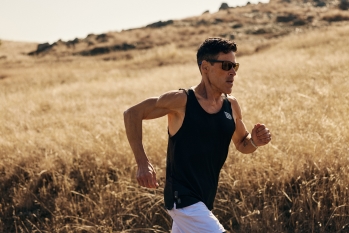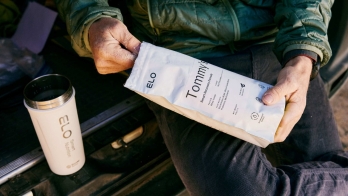How to recover faster from a cycling accident or injury
Recovering from a cycling accident or injury can be a long and challenging ride. Here are seven must-know nutrition and recovery strategies you should implement that can support injury healing and get back on the bike faster.
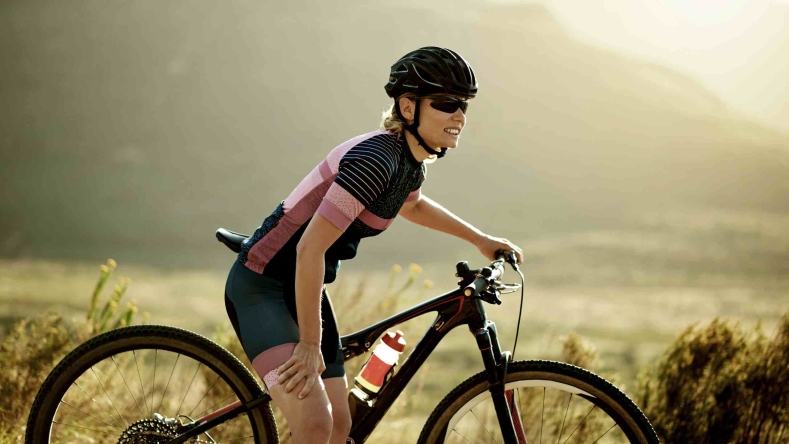
Contents
1. Ensure adequate calorie intake. 2. Prioritize protein. 3. Fuel recovery with nutrient-dense foods. 4. Consider omega-3 supplementation. 5. Find a good physical therapist. 6. Get plenty of sleep. 7. Implement a gradual return to exercise. Injury-specific nutrition recommendations Other cycling and recovery-related articles Summary Key takeawaysWhether you’re recovering from a crash or tweaked a tendon during training, accidents and injuries are a seemingly unavoidable part of cycling. While both can be mentally and physically challenging, proper nutrition and physical recovery strategies can help minimize muscle and training losses and speed up healing.
In this article, we will explore the top strategies for nutrition and physical recovery after a cycling accident or injury. From optimizing your diet to working with a physical therapist and easing your way back into training, we've got you covered. So, let's dive in and get you back on that saddle ASAP.
1. Ensure adequate calorie intake.
When you’re injured, you may be tempted to reduce your calorie intake since you’re not burning as much on the bike. However, your energy expenditure may actually be up to 20% higher, especially in the early phases [ 2
Research shows inadequate energy intake can accelerate muscle mass loss by decreasing muscle protein synthesis and facilitating muscle protein breakdown, especially during periods of immobility, and significantly hinder injury recovery [ 1 2
On the other hand, consuming more energy than you need will increase body fat and systemic inflammation, which also fuels the loss of muscle mass [ 2
To aid healing and minimize muscle loss, experts recommend an injured athlete’s energy intake be as close as possible to their energy expenditure or even slightly higher (25-30 kcal/kg of body weight) [ 1 2
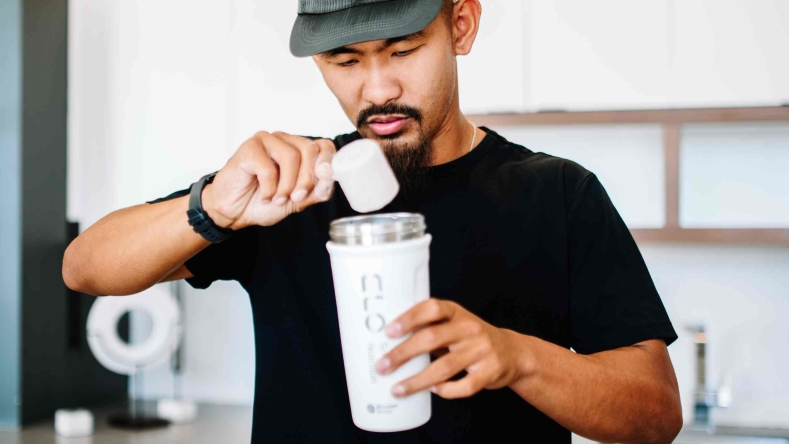
2. Prioritize protein.
Protein is essential for repairing damaged tissues, minimizing muscle loss, and promoting muscle protein synthesis. Not getting enough while recovering from an injury will lead to increased loss of muscle mass, decreased tissue repair and healing, inflammation, and impaired healing [ 2
How much protein do you need if you’re injured?
Most studies recommend that injured athletes consume 1.6-3 g/kg/day [ 1 1
Eating protein rich in leucine, an essential amino acid, may also benefit recovery by inhibiting muscle catabolism in injured athletes, especially during the early stages when catabolic processes can be significant [ 1
For this reason, experts recommend that injured athletes consume 20–30 g of leucine-rich protein (~3 g of pure leucine) in each meal or snack, including before bed [ 2
Spreading out your protein intake evenly throughout the day is also recommended. Research shows that when protein is distributed evenly, it helps your muscles grow and recover more effectively and can help prevent muscle loss [ 2
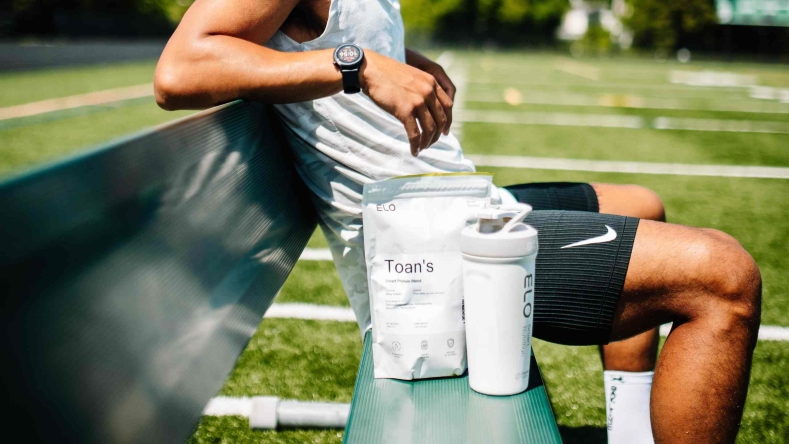
How Elo Smart Protein can boost recovery from a cycling injury
If you’re wondering how to meet your increased protein needs and get that all-important leucine while not overlooking other key nutrients in your diet, Elo Health
Elo Smart Recovery
Smart Recovery membership also includes unlimited access to a registered dietitian and real-time dosing recommendations based on your latest tracked workout via the Elo App. Unlike other personalized protein products, Elo Smart Recovery evolves as your goals and needs change through continuous feedback loops.
Check out this article to learn more about Smart Protein 30% off your first month with code TRY30
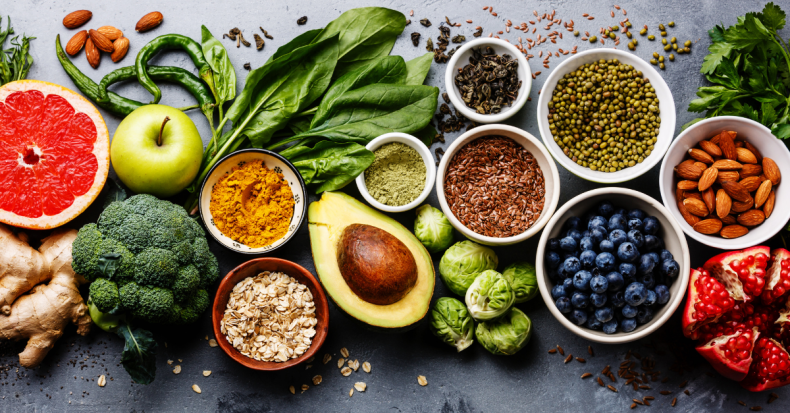
3. Fuel recovery with nutrient-dense foods.
When you’re injured, the quality of the food you consume can negatively or positively affect your recovery as much as the quantity of food you eat. The nutrients in food play essential roles in metabolism, energy production, tissue repair, muscle and bone mass maintenance, immunity, and also protect against oxidative damage [ 1
Here are some ways to ensure you’re getting the nutrients you need from foods to support your recovery from a cycling injury.
Emphasize whole grains, lean proteins, and healthy fats. These foods are great for sustained energy while supporting tissue repair, reducing inflammation, and promoting overall health.
Fill up on fruits and veggies. These foods are particularly rich in antioxidants and vitamins (like C and E), which promote tissue healing.
Don’t forget your calcium and vitamin D. Your body needs
vitamin D
to absorb calcium, a key mineral in healing and maintaining strong, healthy bones. Good sources of calcium include dark leafy greens (such as kale), fortified tofu and soy milk, and vitamin D-fortified milk and yogurt.Stay hydrated to help with healing. Proper hydration is vital for nutrient delivery, waste removal, and maintaining all of the body’s physiological functions.
4. Consider omega-3 supplementation.
If you’re not already taking a fish oil supplement
Inflammation is a natural and healthy response to injury, directing nutrients and immune factors to the injured site to facilitate repair [ 4 3 1 4
The long-term intake of omega-3 fatty acids also enhances the body’s sensitivity to amino acids and muscle protein synthesis response. Though it may not benefit muscle gain, fish oil supplementation may help reduce muscle loss during immobilization [ 1
The daily recommendation for all omega-3s is 1,600 mg/day for men and 1,100 mg/day for women. Consuming 1–2 portions (~8 ounces) of fish per week can help you meet this requirement, but if you don’t, fish oil supplements may be beneficial if you’re recovering from an injury. A typical fish oil supplement provides about 1,000 mg of fish oil with 180 mg EPA and 120 mg DHA; however, formulations and doses vary widely [ 5
Whether you’re taking fish oil or considering it, remember that excess supplementation could excessively dampen the body’s natural inflammatory response and impair healing. A conservative approach to supplementation can promote a healthy inflammatory response, with the goal being to meet the daily recommendations for omega-3 intake [ 6
5. Find a good physical therapist.
Recovering from a cycling injury shouldn’t be done solo. Working with a physical therapist can help ensure you reach maximum recovery potential and expedite the recovery process.
These musculoskeletal and rehabilitation experts will assess your injury, functional limitations, and help you set goals to create a personalized recovery plan. The exercises they prescribe will address your needs to help you gradually build and regain strength and mobility. A physical therapist will also monitor your progress and tweak your protocol as needed to ensure you recover safely and reduce re-injury risk [ 7
Physical therapy is essential to injury recovery, but remember, it only works if you do it. Scheduling your PT time during your usual workout windows will ensure you don’t slack on your exercises and help you maintain good exercise habits.

6. Get plenty of sleep.
While you may find it difficult to sleep immediately after an injury, quality sleep is vital for injury recovery —and may even help prevent future injuries [ 8 9
When you sleep, blood flow to tissues increases, delivering more oxygen and nutrients essential for tissue healing, cellular repair, and overall recovery [ 8
Sleep also promotes the release of growth hormones, stimulating muscle repair and growth. Without adequate sleep, growth hormone production declines, making it harder for your body to recover from injuries [ 8
Lack of sleep can also cause the body to produce more substances that cause inflammation and pain, such as interleukin 6 and C-reactive protein. This can negatively affect the immune system and make it harder for the body to heal [ 8
To optimize recovery, experts recommend getting at least 7-9 hours of quality sleep per night [ 10
If you struggle to fall or stay asleep, even when you’re not injured, here are some natural sleep supplements
7. Implement a gradual return to exercise.
Last but not least, when recovering from a cycling injury, it's important to take a gradual approach to reintroducing exercise. Trying to do too much too soon can slow your recovery, increase your chance of reinjury, or worse, cause additional damage.
Your doctor or physical therapist can provide you with a recovery plan tailored to your specific injury to help you minimize these risks and steadily regain your strength and mobility.
Getting over an injury can be long and tedious, but patience and consistency will pay off.
Injury-specific nutrition recommendations
The tips above can help you heal from most general cycling accidents and injuries; however, certain nutrients may be particularly beneficial for healing injuries involving the brain, muscles, bones, or connective tissues like tendons and ligaments.
Here are some key nutrients that may further boost your recovery depending on your cycling injury type.
Concussion
If you suffer a concussion as a result of a cycling accident, energy intake and diet quality are important and should be prioritized as soon as possible.
Experts recommend choosing mostly whole, unprocessed foods while avoiding inflammatory foods like highly processed and refined foods, red meat, and alcohol. However, if you’re struggling with nausea and vomiting, a bland diet may also be necessary.
Furthermore, you should aim for a higher ratio of omega-3s to omega-6s. You can do this by swapping out sunflower and corn oils for olive oil or cooking with soybean oil which is high in both omega-6 and omega-3 fats. Of course, protein also remains important. Foods like fatty fish and omega-3–rich eggs can combine quality protein with healthy omega-3s to moderate inflammation. [ 11
Muscle injuries
When it comes to muscle injuries, omega-3s seem particularly beneficial, primarily due to their potent anti-inflammatory effects [ 1 Here’s everything you need to know about fish oil
Bone injuries
If you're dealing with a bone injury from a cycling accident, nutrients like calcium, vitamins D and A are key for bone rehabilitation. Additionally, manganese, copper, boron, iron, zinc, vitamin K, vitamin C, and B vitamins have also been shown to be important for the health and support of our bones [ 1
You can obtain all of these nutrients from whole foods and a healthy diet; however, a multivitamin can also be beneficial for covering any nutrient gaps during this critical recovery period.
Tendons and ligament injuries
Tendons and ligaments are particularly prone to injury, especially as we age. If you’re suffering from a connective tissue injury, research suggests nutrients like vitamin C collagen turmeric 1
Elo Smart Recovery boosts
Other cycling and recovery-related articles
The most effective strategies for cycling recovery
, according to science
Summary
Recovering from a cycling injury can be a challenging journey, but with the right strategies, you can speed up your healing process and get back on your bike faster. You can do this by matching energy intake to your needs, getting enough protein, consuming nutrient-dense foods, and getting the recommended omega-3s. Additionally, working with a physical therapist, prioritizing quality sleep, and gradually reintroducing exercise will help ensure a successful recovery and get you back in the saddle faster.
Disclaimer: The text, images, videos, and other media on this page are provided for informational purposes only and are not intended to treat, diagnose, or replace personalized medical care.
Key takeaways
Proper nutrition and physical recovery strategies are crucial for minimizing muscle and training losses and speeding up healing after a cycling accident or injury.
Ensure adequate calorie and protein intake to promote healing, avoiding inadequate and excessive consumption.
Consider fueling recovery with nutrient-dense foods, emphasizing whole grains, lean proteins, healthy fats, fruits, vegetables, calcium, vitamin D, and staying hydrated. Personalized protein products, like
Elo Smart Recovery
, can help injured cyclists meet their increased protein and nutritional needs.Omega-3 supplementation, collaborating with a physical therapist, prioritizing quality sleep, and implementing a gradual return to exercise can also enhance recovery from cycling injuries.
References
Papadopoulou S. K. (2020). Rehabilitation Nutrition for Injury Recovery of Athletes: The Role of Macronutrient Intake. Nutrients, 12(8), 2449.
https://doi.org/10.3390/nu12082449
Giraldo-Vallejo, J. E., Cardona-Guzmán, M. Á., Rodríguez-Alcivar, E. J., Kočí, J., Petro, J. L., Kreider, R. B., Cannataro, R., & Bonilla, D. A. (2023). Nutritional Strategies in the Rehabilitation of Musculoskeletal Injuries in Athletes: A Systematic Integrative Review. Nutrients, 15(4), 819.
https://doi.org/10.3390/nu15040819
Howard, E. E., Pasiakos, S. M., Blesso, C. N., Fussell, M. A., & Rodriguez, N. R. (2020). Divergent Roles of Inflammation in Skeletal Muscle Recovery From Injury. Frontiers in physiology, 11, 87.
https://doi.org/10.3389/fphys.2020.00087
Joyce, D., & Lewindon, D. (2015). Sports Injury Prevention and Rehabilitation: Integrating Medicine and Science for Performance Solutions. Routledge.
https://www.routledge.com/Sports-Injury-Prevention-and-Rehabilitation-Integrating-Medicine-and-Science/Joyce-Lewindon/p/book/9780415815062
Office of Dietary Supplements - Omega-3 fatty acids. (n.d.).
https://ods.od.nih.gov/factsheets/Omega3FattyAcids-HealthProfessional/
Tipton K. D. (2015). Nutritional Support for Exercise-Induced Injuries. Sports medicine (Auckland, N.Z.), 45 Suppl 1, S93–S104.
https://doi.org/10.1007/s40279-015-0398-4
Crockett B. (2011). Rehabilitation of the athlete. Missouri medicine, 108(3), 173–175.
https://www.ncbi.nlm.nih.gov/pmc/articles/PMC6188287/
Charest J, Grandner MA. Sleep and Athletic Performance: Impacts on Physical Performance, Mental Performance, Injury Risk and Recovery, and Mental Health. Sleep Med Clin. 2020 Mar;15(1):41-57. doi: 10.1016/j.jsmc.2019.11.005. PMID: 32005349; PMCID: PMC9960533.
https://pubmed.ncbi.nlm.nih.gov/32005349/
Huang K, Ihm J. Sleep and Injury Risk. Curr Sports Med Rep. 2021 Jun 1;20(6):286-290. doi: 10.1249/JSR.0000000000000849. PMID: 34099605.
https://pubmed.ncbi.nlm.nih.gov/34099605/
Bird, S. (2013). Sleep, Recovery, and Athletic Performance. Strength and Conditioning Journal, 35(5), 43–47.
https://doi.org/10.1519/ssc.0b013e3182a62e2f
Brain Health: Nutrition care after Concussion - Today’s Dietitian Magazine. (2020, May). Retrieved July 12, 2023, from
https://www.todaysdietitian.com/newarchives/0520p12.shtml#:~:text=%E2%80%9CIt's%20important%20that%20we%20try,cellular%20and%20tissue%20production%2Frepair
.

